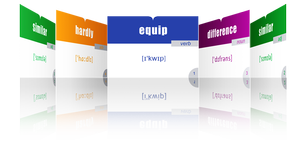SCIENCE-MERCURY
- Подробности
- 174
Mercury is the smallest and closest planet to the Sun. It goes around the Sun in 88 days and spins once every 59 days. It has almost no air and no moons, so days are very hot and nights very cold.
MERCURY

Mercury formed about 4.5 billion years ago, at the very beginning of the Solar System. It is the first and closest planet to the Sun. On average, it is about 57.9 million km away, moving in an oval orbit. Sometimes it comes as close as 46 million km, and sometimes it goes as far as 69.8 million km.
The diameter of Mercury is about 4,879 km, which is only a little bigger than the Moon and less than half the size of Earth. It goes around the Sun in just 88 Earth days (one year). It spins once on its axis in about 59 Earth days (one rotation). But because of the way it moves, one solar day — from one sunrise to the next — lasts about 176 Earth days. The tilt of its axis is only about 0.03°, so there are almost no seasons.
Temperatures on Mercury are extreme: during the day the surface heats up to about +430 °C, while at night it drops to about −180 °C. Mercury has no thick atmosphere, only a very thin exosphere made of atoms of oxygen, sodium, hydrogen, helium, and potassium. Because of this, the sky is always black, even in the daytime, and the solar wind can hit the surface directly. However, some craters near the poles keep permanent ice in shadowed regions.
Inside, Mercury has a very large, iron-rich core that takes up most of its volume. It has a global magnetic field, but it is weak compared to Earth’s. The rocky surface is covered with countless craters, long ridges, and huge cliffs called scarps that formed when the planet cooled and shrank. In appearance, it looks similar to our Moon.
Mercury has no moons and no rings. Because of its thin atmosphere, strong radiation, and extreme heat and cold, scientists believe there is no life on this planet. Yet studying Mercury helps us better understand how rocky planets formed and changed in the early Solar System.
LISTEN TO THE TEXT




